Yellowing of garlic leaves is the most common problem encountered when growing the crop.
Diagnosis of garlic
To accurately determine the cause of yellowing of leaves, plants are diagnosed.
- It is necessary to determine the phase of development of the crop (sprouting, regrowth of tops, formation and growth of arrows, maturation of heads). The size of plants should correspond to the development phase.
- Visual inspection.In addition to yellowing, pay attention to the presence of damage to the leaves, the presence of insects on them (aphids, small worms).
- Inspection of the underground part of the plant. Pull out 2-3 yellowed specimens and inspect the bulb and roots for damage, pests, and rot.
Diagnostics in most cases allows you to determine the cause of yellowing of garlic leaves.
Causes of yellowing garlic leaves
Any problems that arise during the growth of garlic are reflected in the leaves. The main causes of yellowing are:
- autumn germination of winter garlic;
- freezing;
- getting wet;
- lack of nitrogen;
- damage by stem nematode;
- rust;
- downy mildew;
- bottom rot (fusarium);
- acidic soil;
- yellow dwarf virus.
Timely measures taken in most cases can minimize the risk of reduction or loss of yield.
Autumn germination of winter garlic
Causes. Winter garlic planted too early germinates, and when cold weather sets in, it can freeze. Low temperatures in the absence of snow damage both the above-ground parts of plants and the cloves.
Signs of damage. The seedlings in spring are yellow, stunted, practically do not grow, the roots are partially damaged.
Solution. If the loss of plants is small, then you can try to save them by watering them with a solution of growth stimulants (Kornevin, Heteroauxin). If most of the plantings are damaged, there is no point in saving them. In order not to be completely left without a harvest, you can plant spring garlic in place of the winter crop.
Freezing
Causes. Occurs in spring during recurrent spring frosts. Garlic seedlings can withstand short-term temperature drops to -2-3°C.If frosts are strong and prolonged, then the leaves freeze slightly. In addition, garlic is very sensitive to sudden temperature changes. The tops may freeze when the difference between day and night temperatures is more than 14-15 °C. Frosts damage plants in the germination phase and at the initial stage of tops growth.
Signs of damage. The leaves turn yellow, lose their elasticity, and droop. If the stem is caught by frost, it becomes yellow-green in color, and the outer tissues, along with the lower leaves, gradually dry out.
Solution to the problem. The plants themselves gradually recover. To accelerate the formation of new leaves, garlic is sprayed with growth stimulants: Zircon (0.3-0.5 ml per 3 liters of water), Gibbersib.
Getting wet
Causes. Soaking of the crop can occur in very wet, rainy summers, as well as in areas where water constantly stagnates. Soil oversaturated with moisture does not allow air to pass through to the roots, and as a result, plants begin to experience oxygen starvation. The roots suffocate and die, and then the above-ground part also dies. Soaking of garlic most often occurs in the spring and at the end of the growing season.
Signs of damage. The plants turn yellow and lie down, the stem is easily separated from the bulb. The clove (or head) itself is almost completely decomposed.
Solution to the problem. When there is constant stagnation of water on the site, the crop is grown in high ridges or ridges. If during the growing season of plants the soil is oversaturated with moisture, then unhilling is carried out: the soil is raked off a little from the tops of the bulbs, thereby facilitating the supply of oxygen to the roots.
Nitrogen deficiency
Causes. A deficiency of the element is observed in the spring with high soil moisture, as well as during prolonged cold weather. Winter garlic is very sensitive to nitrogen deficiency. Spring varieties almost never experience nitrogen starvation.
Description. Lack of nitrogen nutrition manifests itself in the spring during the growth of tops. The plants take on a pale green color and the leaves begin to turn yellow. First, the older lower leaves turn yellow, then the younger middle leaves. Plant growth slows down.
Solution to the problem. Do a one-time fertilizing with nitrogen. On very poor soils in rainy weather, it is permissible to re-apply fertilizer after 14 days. The seedlings are watered with a urea solution (1 tablespoon per 10 liters of water), solution consumption 3 l/m2. When soil moisture is high, dry fertilizing is carried out: grooves are made along the rows of garlic into which urea (2 g/m2) is embedded.
Damage by stem nematode
A very dangerous disease of garlic, the causative agent of which is microscopic worms - nematodes. Their sizes are very small (up to 2 mm). They infect the stem and leaves, feeding on the sap of living cells. They overwinter in seed material and leaf debris. The lifespan of worms is 50-60 days; 3-5 generations of pests appear per season.
Worms move independently in the soil or can get into beds with soil, tools, and plants. They lay eggs in the bottom of the garlic, under unfavorable conditions they fall into suspended animation and can remain dormant for 6-8 years. The pest can also parasitize parsley, radishes, tomatoes, parsnips, chickweed (commonly called chickweed).
Signs of defeat.
- White dots remain on the bulb where the worms have penetrated.
- Yellow-white stripes appear on the leaves, then the leaves turn yellow, curl and dry out.
- The head becomes loose, the bottom becomes rotten, the roots die.
- A specific unpleasant odor appears.
- During storage, the cloves at the base of the bottom turn yellow and soften.
Control measures only preventative.
- Since the spread of the pest occurs mainly with seed material, the main method of control is careful sorting of seed material. If affected cloves are found, or even if there is a suspicion of nematode infection, the entire head is discarded.
- Disinfect the cloves before planting by soaking them in water heated to 45°C for 10-15 minutes.
- Since some of the pests remain in the soil, it is necessary to plant garlic in the same place no earlier than after 5 years.
- Placement of beds with garlic marigolds around the perimeter. Their roots secrete substances that repel nematodes.
- Removing affected plants from the garden bed.
- Timely weeding.
To combat pests remaining in the soil, use Akarina or Fitoverma powder. The drug is evenly scattered over the surface of the earth and embedded to a depth of 2-10 cm.
Nematicides, previously used to control stem nematodes, are now banned due to their high toxicity.
Rust
The causative agent is pathogenic fungi. Overwinters as spores on plant debris. It affects leaves, which leads to a significant decrease in garlic yield.
- Signs of defeat. The disease can manifest itself in 2 variants.
At the beginning of infection, yellow-brown stripes and streaks are visible on the leaves. As the disease progresses, they grow, the leaves turn yellow and dry out. - Small yellow spots appear on the leaves, which later turn brownish-brown.
Control measures consist of spraying plants with fungicides: Fitosporin-M, Bordeaux mixture, Ridomil Gold.
If onion plantings are infected with rust, then preventive spraying of garlic with the same preparations is carried out every 2 weeks.
Downy mildew or peronosporosis
A disease caused by pathogenic fungi - peronospora. The disease spreads especially strongly in rainy summers. In hot summers, peronosporosis practically does not appear.
Signs of defeat.
- It usually starts from the tops of the leaves, spreading gradually throughout the entire leaf.
- Yellow-brown spots appear on the upper side of the leaves; on the lower side they are covered with a whitish-gray coating.
- The affected areas become deformed and gradually dry out.
- Plants are stunted.
Control measures consist of spraying with copper-containing preparations (CHOM, Bordeaux mixture, copper sulfate), Ridomil Gold, Quadris or the biological preparation Fitosporin M. The solution is prepared in accordance with the instructions in the instructions.
Bottom rot (fusarium)
A disease of garlic caused by pathogenic fungi. The source of infection is soil or seed material. Warm and humid weather is especially favorable for the development of fusarium.
Signs of defeat. The disease affects the bottom of the bulb, then spreading to the above-ground part.
- A white coating appears on the bottom and between the scales of the bulb.
- The heads soften and the roots rot.
- Brown streaks appear on the stems.
- A coating of white, light pink, pink-violet or crimson color appears in the axils of the leaves.
- The leaves turn yellow from the tips to the base, then turn pinkish-brown and die.
Control measures.
- Good results when the first signs of the disease appear are given by watering with Fitosporin-M (the solution is prepared according to the instructions). The same preparation is sprayed on garlic when plaque and streaks appear on the leaves.
- When plaque appears on the leaves, spray with Quadris. The procedure is repeated after 10-14 days.
- To prevent fusarium, preventive measures are required: sorting seed material, dressing the cloves before planting, observing crop rotation, and destroying plant residues.
Winter garlic is more susceptible to bottom rot than spring garlic.
Soil acidity
If, from year to year, garlic seedlings turn yellow for no apparent reason, then it is necessary to check the acidity (pH) of the soil. Plants grow well on neutral or, in extreme cases, slightly acidic (pH 5.5-6.5) soils.
Signs.
- If the soil is acidic, the roots cannot absorb sufficient nutrients. The seedlings turn yellow, the plants acquire a yellowish-green color, but do not die.
- Garlic growth slows down.
- The heads are small and loose.
Solution to the problem.
First you need to determine the acidity of the soil. Stores sell special devices or litmus paper with a color scale. To determine pH, follow the instructions. An indirect indicator that the soil is acidic is the growth of plants such as plantain, sorrel, wood lice, and horsetail in the area.
If the pH is below 6.3, then liming is carried out. Doses of lime depend on the acidity of the soil, its mechanical composition and the applied lime material.
Doses of lime for various soils (kg/100 m²)
|
Soil composition |
Soil pH |
||||
|
4.5 and less |
4,8 | 5,2 | 5,4 — 5,8 | 6,1 — 6,3 | |
| Sandy loam and light loamy |
40 kg. |
30 kg |
20 kg |
20 kg |
— |
| Medium and heavy loamy |
60 kg. |
50 kg |
40 kg |
35 kg |
30 kg |
Lime fertilizers are applied in the fall before digging. Limestone and dolomite flour can be used together with organic fertilizers; they deoxidize the soil within 3-5 years. Garlic is planted 2 years after applying these fertilizers.
The fluff must not be added together with manure, since as a result of their interaction, a significant amount of nitrogen is released, which prevents the garlic heads from setting. After adding fluff, you can immediately plant winter garlic. But it should be remembered that the duration of action of the fertilizer is only 1 year.
Yellow dwarf virus
The causative agent of the disease is a virus that lives only in living plant cells. Its spread is facilitated by aphids attacking garlic. The bulbs are not affected by the virus and healthy seed material can be regenerated from them.
Signs of infection.
- Sick plants are severely stunted and look dwarfed.
- The tops become yellow and lose their elasticity.
- Longitudinal folds form along the entire length of the leaves.
- There is no straightening of the arrows.
- The number of bulblets in the inflorescence is significantly reduced.
There are no chemical remedies against the yellow dwarf virus, and preventive measures do not help either. The only way to get rid of the parasite is to completely replace the seed material.
Should you add salt to garlic?
When the leaves turn yellow, many water the beds with garlic with a solution of table salt. Salt itself (NaCl) does not contain the nutrients garlic needs and does not protect plants from diseases. But such watering is not without some meaning.
Salt helps to raise a certain amount of nitrogen into the upper layers of the soil (the soil solution moves from a less concentrated environment to a more concentrated one), and also repels the onion fly, which sometimes attacks garlic.
But this effect is very short-lived. After rain or watering, the concentration of saline solution in the soil decreases and the garlic continues to turn yellow.
When garlic leaves turn yellow, it is necessary to use time-tested and experience-tested products that reliably protect plants from adverse effects.
Why garlic leaves may turn yellow video:
You may be interested in reading other articles about growing garlic:
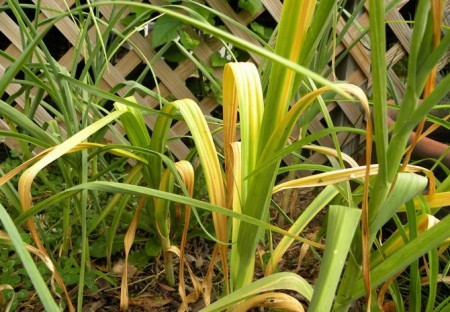

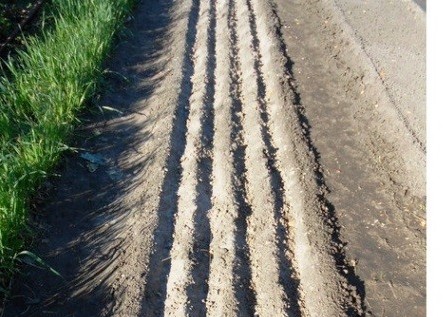
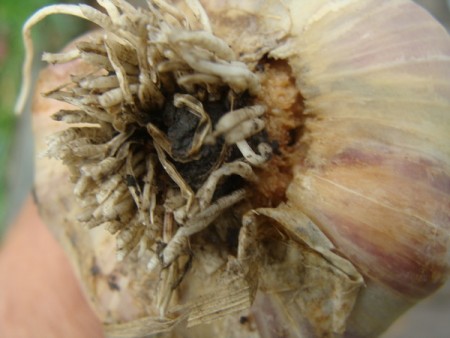
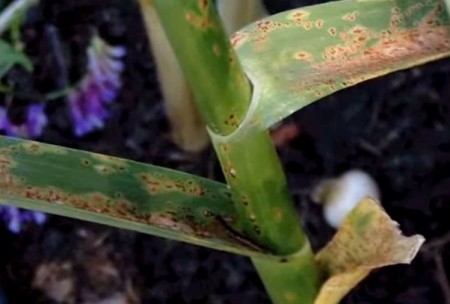
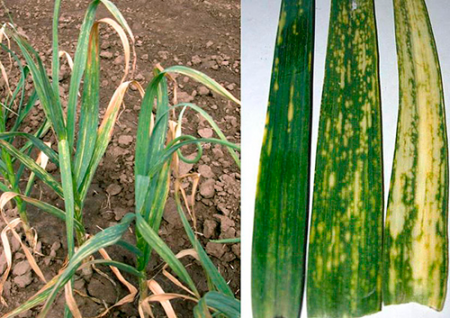
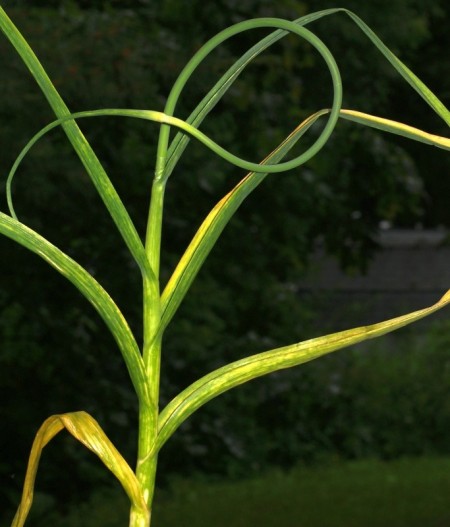

 (8 ratings, average: 4,38 out of 5)
(8 ratings, average: 4,38 out of 5) CUCUMBERS NEVER GET SICK, I'VE BEEN USING ONLY THIS FOR 40 YEARS! I SHARE A SECRET WITH YOU, CUCUMBERS ARE LIKE THE PICTURE!
CUCUMBERS NEVER GET SICK, I'VE BEEN USING ONLY THIS FOR 40 YEARS! I SHARE A SECRET WITH YOU, CUCUMBERS ARE LIKE THE PICTURE! You can dig a bucket of potatoes from each bush. Do you think these are fairy tales? Watch the video
You can dig a bucket of potatoes from each bush. Do you think these are fairy tales? Watch the video
 How our fellow gardeners work in Korea. There is a lot to learn and just fun to watch.
How our fellow gardeners work in Korea. There is a lot to learn and just fun to watch. Eye trainer. The author claims that with daily viewing, vision is restored. They don't charge money for views.
Eye trainer. The author claims that with daily viewing, vision is restored. They don't charge money for views. A 3-ingredient cake recipe in 30 minutes is better than Napoleon. Simple and very tasty.
A 3-ingredient cake recipe in 30 minutes is better than Napoleon. Simple and very tasty. Therapeutic exercises for cervical osteochondrosis. A complete set of exercises.
Therapeutic exercises for cervical osteochondrosis. A complete set of exercises. Which indoor plants match your zodiac sign?
Which indoor plants match your zodiac sign? What about them? Excursion to German dachas.
What about them? Excursion to German dachas.